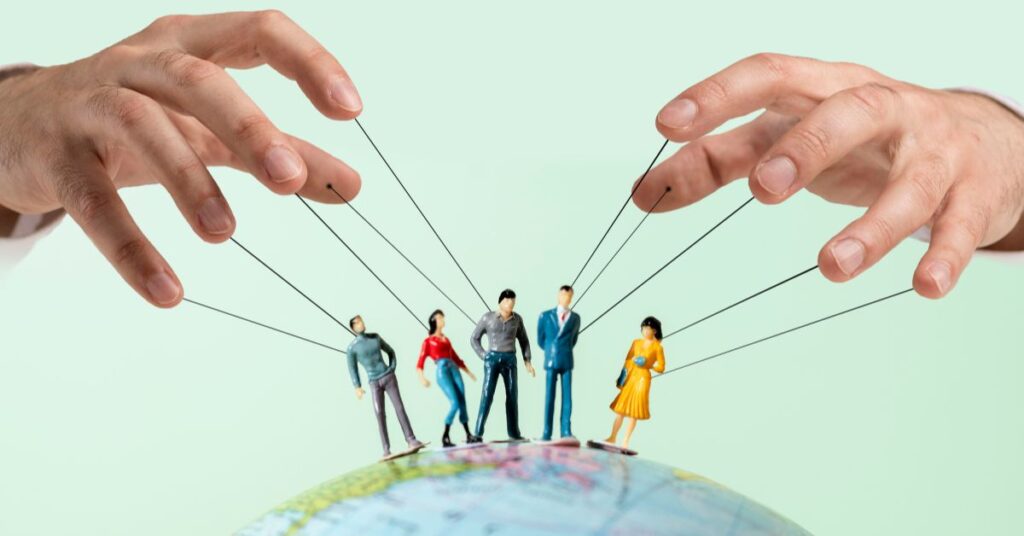Assimilation is a term that often stirs up strong emotions and diverse opinions. At its core, it represents the complex process through which cultures blend, evolve, or even disappear as new influences take hold. This phenomenon has shaped societies throughout history, leading to significant changes in language, traditions, and social norms.
Understanding assimilation requires diving deep into its historical roots and the multifaceted experiences of those involved. It raises questions about identity, belonging, and what happens when distinct cultural practices intersect. As we navigate this intricate web of interactions between communities—both past and present—we can gain valuable insights into our own lives today.
Join us on this exploration of assimilation as we uncover its nuances and impact on cultures worldwide. From positive transformations to challenging consequences, let’s unravel how this ongoing process continues to shape our modern society.
The History of Assimilation
Assimilation has deep historical roots. It often emerged during times of conquest and colonization. Empires sought to unify diverse cultures under a single banner.
In ancient Rome, for instance, conquered peoples adapted to Roman customs and language. This integration aimed to create harmony within the vast empire.
The Age of Enlightenment brought new ideas about identity and belonging. As nations formed, so did pressures for cultural conformity.
In more recent history, waves of immigration in the 19th and 20th centuries fueled debates surrounding assimilation. New arrivals faced expectations to adopt the dominant culture’s norms while often retaining their unique traditions.
Each era shaped assimilation differently, reflecting complex power dynamics and societal changes. Understanding this history reveals how deeply ingrained these processes are in our collective experience today.
The Process of Assimilation: What Happens When Cultures Merge?
Assimilation is a complex journey where cultures intertwine and influence one another. It often begins with the blending of languages, traditions, and practices. As people interact, they exchange ideas that shape their identities.
Over time, distinct cultural markers may fade. Customs once cherished might be replaced by new ones embraced from another culture. This shift can lead to shared celebrations or even altered culinary tastes.
Social structures transform too. Communities adapt as newcomers integrate into existing frameworks. Relationships blossom across cultural lines, creating a richer tapestry of experiences.
However, assimilation isn’t just about loss; it also fosters innovation. The fusion of different perspectives can spark creativity in art, music, and technology.
This process affects everyday life—how we dress, what we eat, and how we communicate evolve through these interactions amidst changing societal dynamics.
Cultural Appropriation vs. Assimilation
Cultural appropriation and assimilation often get tangled, but they represent different dynamics.
Assimilation involves the gradual integration of individuals into a dominant culture while still allowing for some retention of their original identity. It’s about blending and adapting, creating a new cultural tapestry.
On the other hand, cultural appropriation can occur when elements from one culture are adopted by another in a way that disregards their significance or context. This often leads to exploitation rather than understanding.
While assimilation fosters coexistence, cultural appropriation risks erasing vital aspects of marginalized cultures. The line between these concepts is thin yet crucial to understand in our increasingly interconnected world.
Recognizing this difference helps promote genuine appreciation versus mere replication. Cultures should interact respectfully, ensuring that traditions remain meaningful instead of becoming fashion statements or trends devoid of context.
Positive and Negative Effects of Assimilation
Assimilation can create a rich tapestry of cultural exchange. When diverse groups merge, they often share traditions, languages, and culinary delights. This blending can foster understanding and reduce prejudice among communities.
However, the process is not without drawbacks. Frequently, dominant cultures overshadow minority voices. Traditional practices may vanish as newer customs take hold.
Individuals might experience identity crises during assimilation. They grapple with balancing their heritage against societal expectations. This conflict can lead to feelings of loss or alienation from both their original culture and the new one they are expected to embrace.
Education also plays a role in either promoting or hindering assimilation’s effects. Schools that celebrate multiculturalism encourage respect for diversity but may inadvertently push certain narratives at the expense of others.
Assimilation shapes societies in complex ways—creating opportunities while simultaneously posing challenges for those involved.
How Assimilation Has Shaped Modern Society
Assimilation has profoundly influenced modern society, molding our communities in diverse ways. As cultures merge, new traditions and ideas emerge, enriching the social fabric.
Take cuisine as an example. Dishes from various backgrounds now coexist on menus worldwide. Sushi bars thrive in cities far from Japan while tacos are staples beyond Mexico’s borders. This culinary fusion allows for shared experiences across cultural lines.
Language also exhibits signs of assimilation. Many people adopt phrases or slang from different dialects, creating a vibrant tapestry of communication that reflects global interconnectedness.
Moreover, art and music have evolved through this blending process. Genres like hip-hop draw inspiration from multiple influences, showcasing how creativity knows no boundaries.
In education and workplace environments, diversity fosters innovation and collaboration. Different perspectives enhance problem-solving capabilities and drive progress within teams.
Such dynamics illustrate the powerful role assimilation plays in shaping contemporary life.
Conclusion
Assimilation is a multifaceted process that has shaped human interaction and cultural landscapes throughout history. Understanding its complexities allows us to navigate the delicate balance between embracing diversity and fostering unity. The merging of cultures can lead to both enriching exchanges and challenging tensions, highlighting the need for sensitivity in how we approach assimilative practices.
As societies continue to evolve, recognizing the impacts—both positive and negative—of assimilation will be crucial in creating inclusive environments where all voices are heard. By fostering open dialogue about these themes, we can work towards a world that values cultural richness while also ensuring cohesion among diverse communities. The journey of assimilation remains ongoing, inviting reflection on our shared humanity amidst varied backgrounds and experiences.






